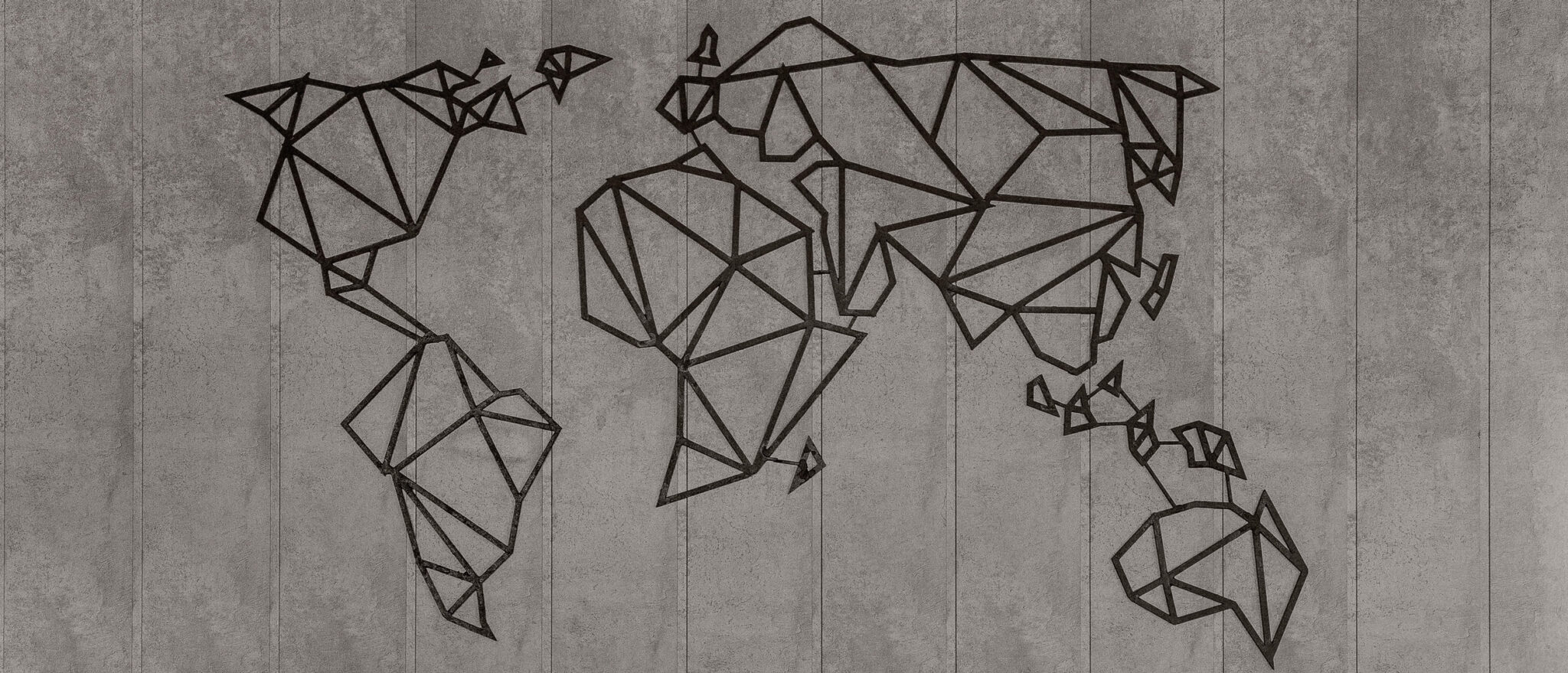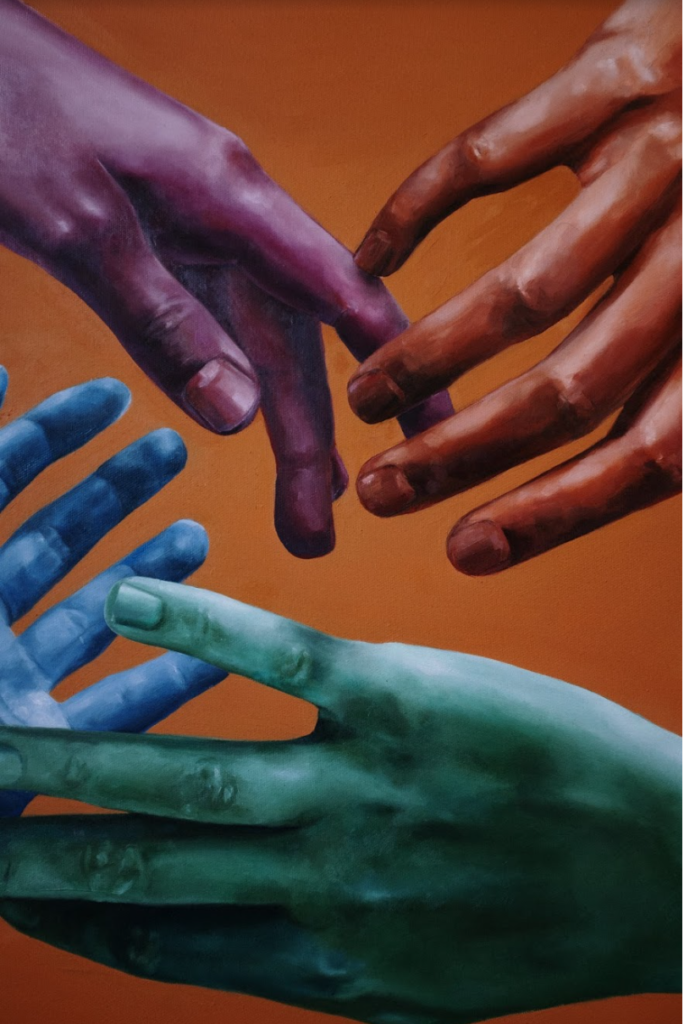
Brief description
Based on the individual reflections from the previous activity “Where do we think? A Critical Thinking World Map”, this brief introduction round aims at bringing the participants into conversation, first by opening (a) a space for exchange; (b) by connecting the theoretical frameworks with their own educational experiences and (c) by analysing on these grounds structural racism and Eurocentrism in HEI. Hereby this workshop aims to support the diagnosis of structural racism, diversity and inclusion in HEI with a particular focus on the specific contexts of the participants and their different – or similar – experiences. The aim of this course unit is to discuss current debates and diagnosis in the fields of decolonial perspectives in HE, specifically along the concepts of coloniality of knowledge, structural racism and epistemic violence.
The exercise “Critical Thinking World Map” of the BRIDGES toolkit seeks to chart the processes of inclusion and exclusion of people, content and literature references in the university context. It allows us to map the ethnic, religious and/or national diversity present in societies and how they stand in relation to each other. This enables on the one hand to provincialize some assumptions made on the basis of Ethno-/Eurocentrism or occidentalism. On the other, it shows the extense on which some populations and their knowledges are excluded from Higher Education and how this corrolates with their geopolitical location and/or religious, racial, ethnic, class, sexuality, ability, gender and non-binary ascriptions. Using the Critical Thinking World Map to introduce us, allows us to observe how racism, migration, ableism, sexuality, gender and class might structure the access to Higher Education in different territories. The map also seeks to problematise the academic and literature references as well as the citation practice used in university curricula.
Objectives
The overall objective of this workshop is to get to know each other and to establish a connection among the participants as a prerequisite for respectful exchange and solidary cooperation. Understanding where we come from and how our personal and academic development is created along the lines of coloniality, is a first step to denaturalize postcolonial forms of structural racism and epistemic violence in HEI. Listening to the each other makes visible the heterogeneity of lifes, academic biographies, and academic struggles, shaped through forms of in- and exclusion.
Underlying objectives are:
- to propose alternative insights and diagnosis departing from the embodied experiences, institutional and national/citizenship backgrounds of the participants.
- to learn through critical listening not only about existing differences and similarities among us and of structural racism, Eurocentrism and decolonizing struggles, but also:
- to appreciate our colleagues, the knowledge they bring to the table and the workshop as an environment that allows us to look at us again from different angles.

Procedure (steps, instructions and timing)
This session will start with a welcome (5 minutes) and introduction round (40 minutes) by building on the previous activity “Where do we think? A Critical Thinking World Map”. Since participants have already prepared an analysis of the institutions in which we are working or studying, we will introduce ourselves and our institutional background through the Critical Thinking World Map and present the sites we colored differently. This will allow us to understand both as individuals, as well as a group, where we come from geopolitically and epistemically, and how these sites do (not) overlap. We will also have the opportunity to highlight aspects that were not considered or that we would like to emphasize.
In step two, the theory building practice (50 minutes), we will combine these personal accounts on our relationships to higher education (institutions) with critical reflections on our experiences in HEI as educators and/or students in our home institutions based on the preparatory readings and with looks to the Critical World Thinking Map. We will have time to reflect on similarities and differences with our colleagues, as well as observations we have had through this activity as well as think of the limits of this exercise. This will be the preparation activity for the critical collective and individual reflection and analysis of each participant’s relationship to structural racism in higher education in the following step.
After the introduction round, participants will be assigned randomly to two breakout rooms for 20 minutes. Each group will assign a speaker and a writer. The writer collects notes, concepts, findings, ideas, and doubts on the shared digital platform Miro while discussing.
They will focus on these two questions:
- Discuss which population groups and parts of the world are represented on the map and which ones are under-represented or excluded.
- What does this distribution tell us about the education we are receiving?
After 20 minutes, the whole course will meet again and the speakers from each group will present their findings to the bigger group (5 minutes in total). Based on the notes from the writers and the speakers, the facilitators will compose those findings in an online mind-map on Miro. Students can amend this mind-map afterwards to foster further discussion.
After this plenum, the group will again meet in two breakout rooms for 20 minutes. Each group will assign a speaker and a writer. The writer collects notes, concepts, findings, ideas, and doubts on the shared digital platform Miro while discussing.
They will focus on these two questions:
- How can we explain the reasons for this unequal distribution of knowledge production vs. raw material?
- What are the mechanisms of in- and exclusion in Higher Education and in our educational everyday environment?
After 20 minutes, the whole course will meet again and the speakers from each group will present their findings to the bigger group (5 minutes in total). Based on the notes from the writers and the speakers, the facilitators will compose those findings in an online mind-map on Miro. Students can amend this mind-map afterwards to foster further discussion.
During these 50 minutes, participants are able to share their observations, reflections and critique, based on class readings and life experiences related to a) forms of exclusions in Higher Education, b) mechanisms of in- and exclusion in public policies regarding Higher Education, or c) in- and exclusion mechanisms and strategies in their educational everyday environment, in particular the university.
After a break of 10 minutes, which gives the participants the opportunity to reflect on the previous exercise and draw conclusions for their expectations regarding forms of cooperation and communication, this session will close with an open reflection of how the group is built, who is present/absent and what this means for our future cooperation and communication along (and beyond) the course.
Timeline
- Introduction and Welcome (5 minutes)
- Presentation along Critical World Thinking Map (40 Minutes)
- First reflection round
- Discussion in breakout rooms (20 minutes)
- Presentation of answers (5 minutes)
- Second reflection round
- Discussion in breakout rooms (20 minutes)
- Presentation of answers (5 minutes)
- Break and individual reflection (10 Minutes)
- Open reflection (15 minutes)
Necessary Materials
- Critical Thinking World Maps from previous activity on Miro
- Translation: If there will be persons without English skills, translators should be present to translate to the different languages.
- Miro as digital mind map tool
Required reading (concepts/tools)
Additional reading
Expected results
Derived materials from the activity
Curators + Collaborators during the Test Course:
2 – 3 moderators


